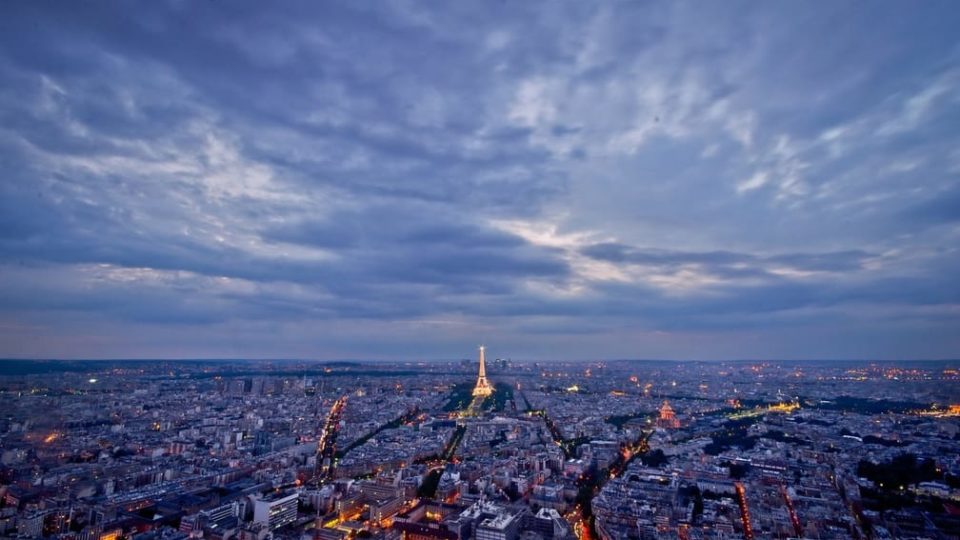Most Famous Monuments in Paris
Arc de Triomphe
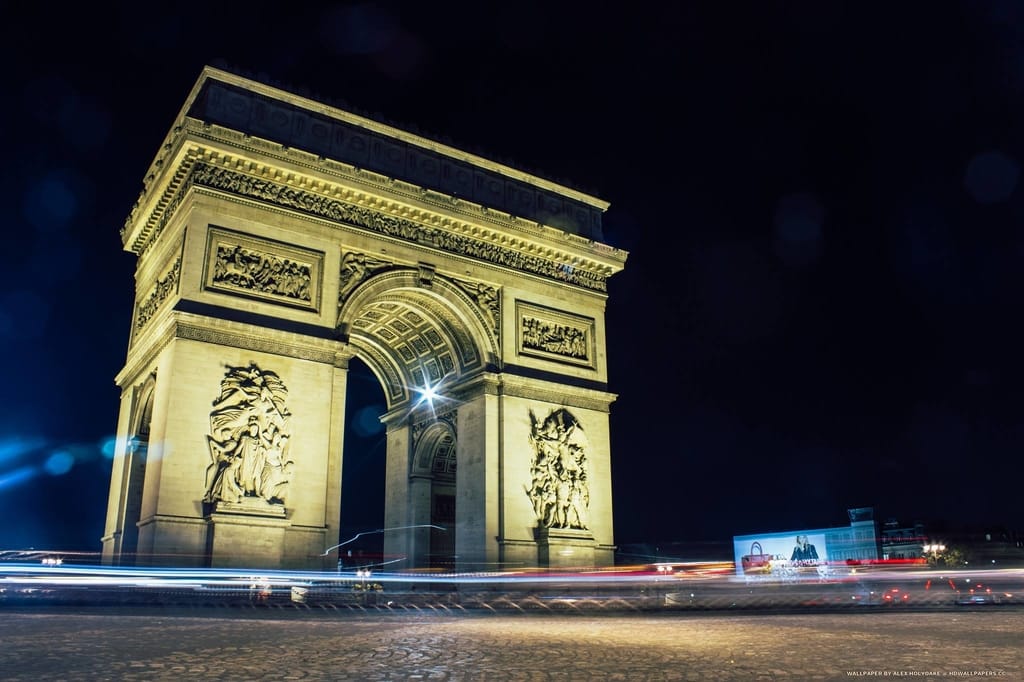
The Arc de Triomphe is one of the most famous monuments in Paris. Commissioned in 1806 by Emperor Napoleon, the monument is located at the center of the Place Charles de Gaulle; at the western end of the Champs-Élysées.
The arch was built to honor the soldiers who fought for France. Inside, the top area of the arch is engraved with the names of generals and wars fought. The tomb of an unknown soldier from World War I lies beneath the arch.
The location of the arch is central, being one of a sequence of historical monuments that mark a route from the courtyard of the Louvre Palace to the outskirts of the city.
Originally, designed by Jean Chalgrin, the monument was completed after Chalgrin’s death under the direction of Hericart de Thury during the reign of King Louis-Phillipe in the mid-1830s.
Today, visitors may reach the Arc through an underpass, climbing the 284 steps to the top of the monument, or taking the elevator and walking the final 46 steps.
From the top, visitors are rewarded by an incredible panoramic view of the city; including Paris’ 12 major avenues leading to the Etoile.
Also Read:
>>Paris Travel Guide
>>Paris Neighborhood Guide
>>Most Famous Monuments in France
Conciergerie
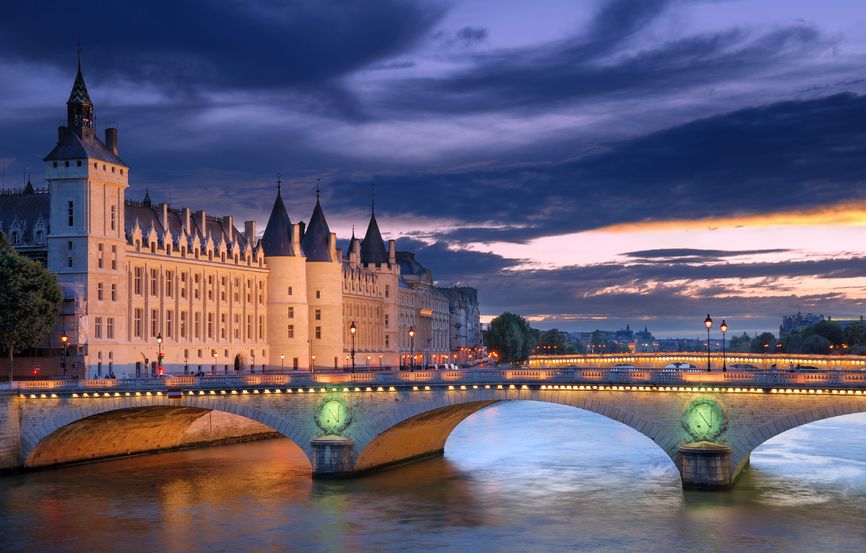
The building began its life as a royal palace, with the original structure dating back to the Merovingian empire in the 10th century. Subsequent rulers, including Louis IX (Saint Louis) and Phillipe IV (Philippe the Fair), expanded the palace structure and grounds.
But as French policies and politics evolved, so did the role of the Conciergerie. During France’s Reign of Terror, the bloodiest part of the French Revolution, the building housed thousands of prisoners, most of which were eventually led to their fates at the guillotine.
In the 19th century, the Conciergerie persisted as a place of confinement, this time for high-value prisoners, including Napoleon III and Marie Antoinette. In fact, the French queen’s cell exists today as a chapel dedicated to her memory. The exterior we see today is a result of a major rebuilding effort that was undertaken in 1858.
Although the building was decommissioned in 1914, most of the building’s rooms are still in use for judicial functions. However, some areas are open to tourists, and the Conciergerie is well worth a visit for anyone traveling through Paris.
Eiffel Tower
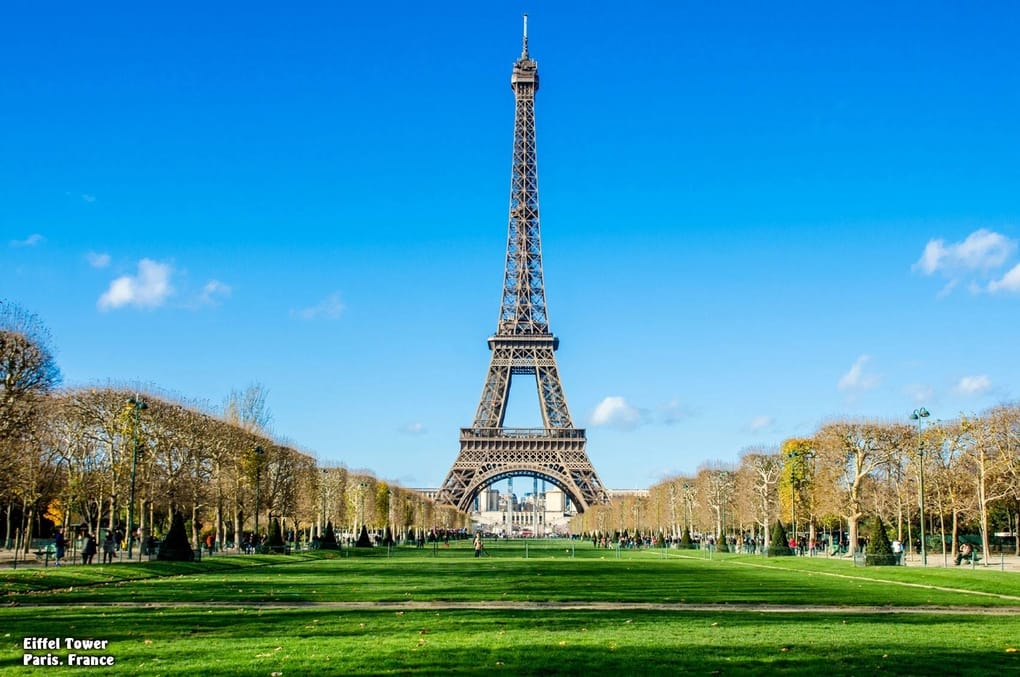
The most famous symbol of Paris and of France itself, the Eiffel Tower, was built in by Gustave Eiffel to commemorate the one-hundredth birthday of the French Revolution.
Rising to a height of 324 meters (1062 feet) on the Champ de Mars beside the Seine River, the Eiffel Tower attracts 6 to 7 million visitors each year. Visitors may take the 704 stairs or a lift to the second level, but only lifts provide service up to the top of the tower. There are two levels at the top, one outside, and one inside.
In addition to providing spectacular views of Paris, the tower accommodates dozens of television and radio transmission antennae. Several snack bars and two restaurants provide food to hungry visitors; the internationally acclaimed Jules Verne restaurant on the second floor requires advance reservations.
Three souvenir shops sell postcards, cultural objects, and memorabilia. Postal service is available.
The Cineiffel provides visitors with unique images of the Eiffel Tower and its history. At night, 336 floodlights and 20,000 light bulbs transform the Eiffel Tower into a dazzling sight. The tower must be repainted every seven years, which requires an astounding 60 tons of paint.
>>Facts About The Eiffel Tower
Famous Paris Bridges
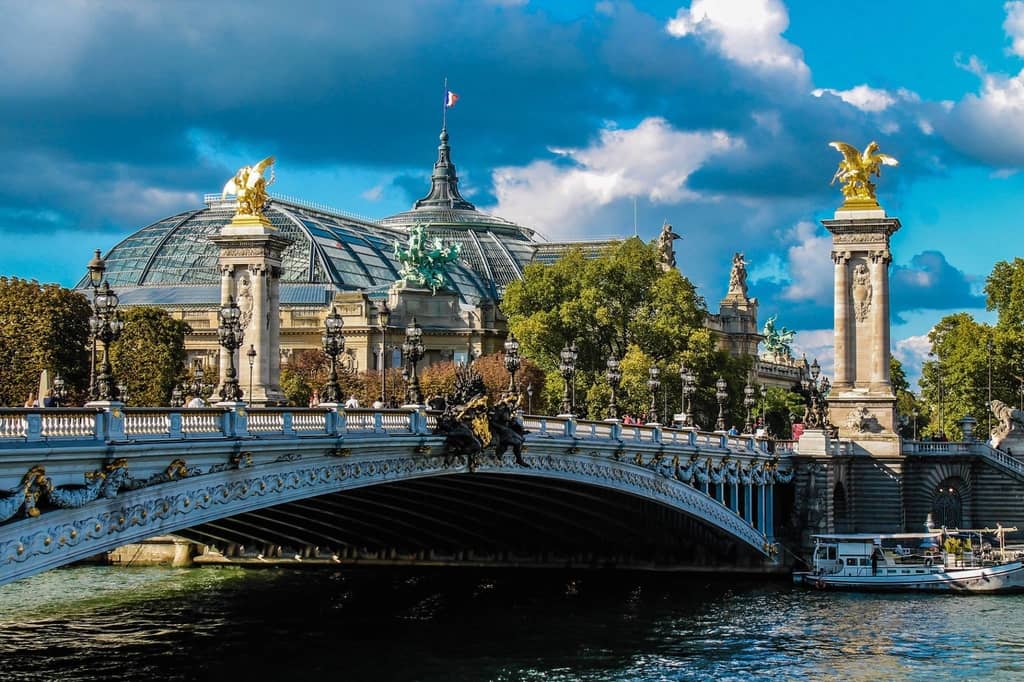
Paris is a city full of beautiful bridges, many of which have a rich history. With 37 bridges crossing over the Seine River, travelers can spend days exploring the fascinating and different bridges of Paris.
The Pont Neuf is the oldest and seemingly the most famous of all the bridges in Paris. Its initial stone was laid in 1578 by Catherine de Médicis, and in 1889 was classified as a historical monument.
The Pont Alexandre III was built for the Universal Exposition in 1900 with a sculptured decoration and elegant single arch. As the Expo took place on both sides of the Seine, the bridge provided easy access for the thousands who attended the event.
The Pont des Arts was originally constructed in 1804 and is located at the tip of Ile de la Cite, next to the Louvre. This bridge was rebuilt in 1984 and has long been a favored meeting place for artists and tourists alike.
The Pont Charles de Gaulle was built in 1996 and resembles the wing of an airplane. This bridge provides a link between the Quai de la Rapee and the Quai d’Austerlitz.
Another of the oldest bridges in the city, along with the Pont Neuf, the Pont Royal, was historically a place of great festivities. In 1939 was listed as a historical monument.
The Pont Sully features three cast-iron arches and actually consists of two bridges, one extending over the left bank, and one over the right bank.
At the narrowest point of the Seine, the Petit Pont has been restored eleven times, the last in 1853.
>>Most Beautiful Bridges In Paris
Paris Hotel de Ville
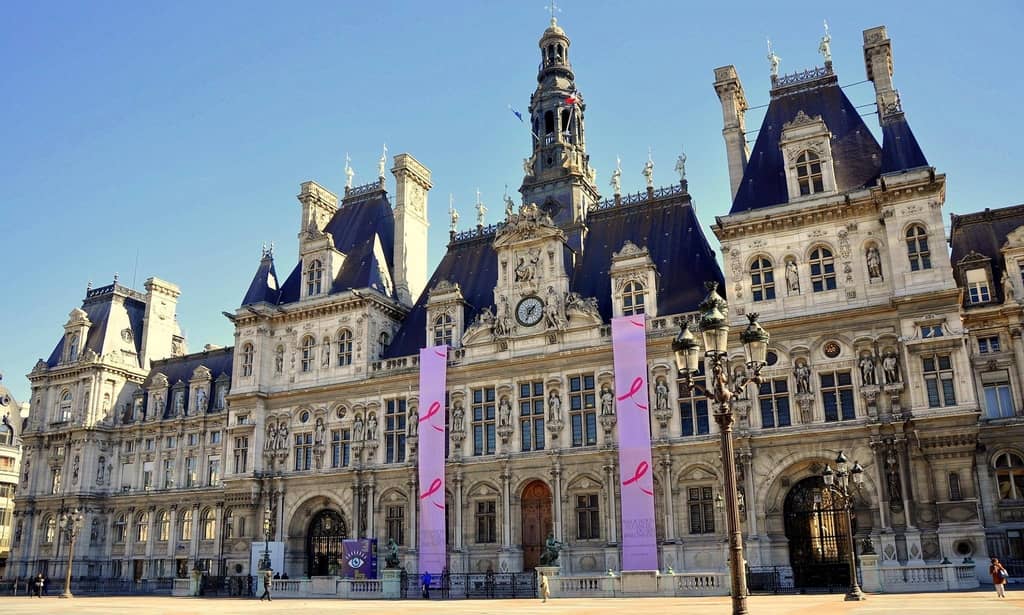
Offering offices for the city’s mayor as well as a number of other city administrators, the location of Paris’ Hotel de Ville (City Hall) has served as the center of Parisian government since 1357 when the land was purchased by merchant Etienne Marcel.
The original building, the Maison aux Piliers (House of Pillars), served the city’s administrators until 1533, when it was torn down by order of King Francis I, who decided to erect a city hall worthy of Paris, then Europe’s largest city.
The resulting building was designed to reflect the spirit of the Renaissance and was not completed until 1628, during the reign of Louis XIII.
The building played a visible role during the French Revolution, and in the years immediately afterward, when revolutionary leader Robespierre was arrested at the Hotel de Ville, along with his followers.
During the late 1800s, the building was expanded and reconstructed, incorporating the works of more than 230 sculptors into the final design.
The Hotel de Ville has always remained front and center in French politics. When Charles de Gaulle made his famous speech marking the Liberation of Paris in 1944, he greeted the crowds from the front window of the Hotel de Ville.
Place de la Bastille
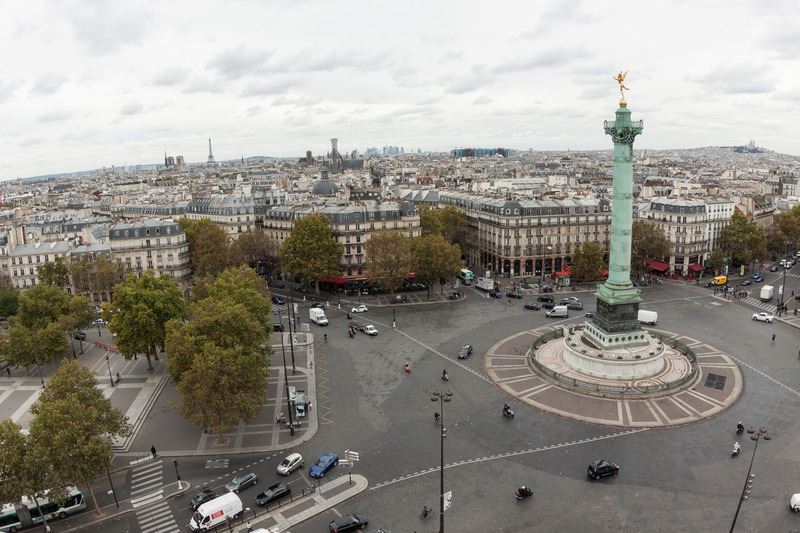
The Bastille, a fortress prison built in the 14th century, is arguably one of the most recognizable Paris landmarks, thanks to its role in the popular literary work, “Les Miserables.” Interestingly though, the landmark itself is no longer in existence but is marked by a commemorative statue, the July Column (Colonne de Juillet.
Although it is most famously known as a prison, the Bastille actually began its existence as a fortress built during the Hundred Years’ War to protect the eastern end of the city. After the war, Louis XIII became the first king to house prisoners behind its walls.
The Bastille was also used as a storage center for munitions, and on July 14, 1789, revolutionaries stormed the Bastille to gain access to the artillery, with hopes of overthrowing the government. After negotiations, which ended in rioting, a crowd of more than 8,000 citizens entered the Bastille, removed the munitions, and freed the remaining prisoners. The French Revolution had begun.
Recognized by the revolutionaries as a symbol of corrupt power, the building was largely demolished in November 1789, and its stones were used in the construction of the Pont de la Concorde. Today, the location of the Bastille is known as the Place de la Bastille and is home to the Opera Bastille. The event was celebrated one year later by the Festival of the Federation.
The Bastille Day, the most important French national holiday, celebrated annually on July 14 is officially the Festival of the Federation; it officially celebrates the Festival of the Federation, but it is widely known as Bastille Day in English.
Bastille is a French word meaning “stronghold” or “castle”, or “bastion”; used with a definite article (the Bastille in English, la Bastille in French), it refers to the prison.
Le Louvre
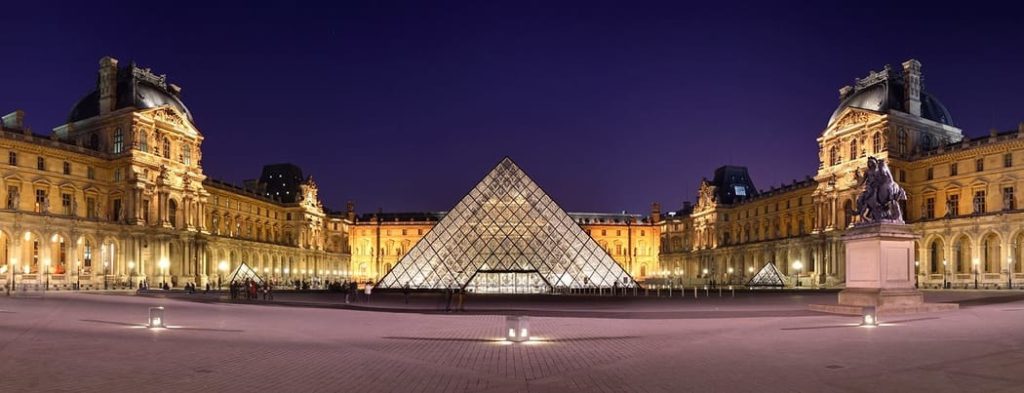
The Louvre museum is located in Paris and is considered a historical monument. The museum is world-famous because of its surplus of 35,000 pieces of history that is located inside the museum walls. The museum displays ancient pieces from different time periods and different locations, some of them coming from ancient Egypt and other locations around the world.
What many people do not know is that the Louvre is actually a Palace that was built in the 12th century. Of course, only some of the original structure is available for viewing, and much of it has been remodeled, restructured, and modified over the centuries since it was first built. The museum first opened in the 1970s and has since become a place of great attraction and interest.
Le Louvre, otherwise known as The Louvre, is usually the first place that people want to visit while on travel to Paris. Le Louvre is a large part of Paris’s appeal, especially since it holds the famous Mona Lisa painting.
If you are visiting Paris, the Louvre is a must-see. It contains thousands of historical art pieces that cannot be viewed anywhere else in the world.
Also Read:
>>Visiting the Louvre in Paris
>>Budget Hotels Near the Louvre in Paris
>>Things To Do Near The Louvre
>>Why You Could Skip the Louvre
>>Should You Book a Fast-Track Ticket to the Louvre?
>>Most Popular Exhibits at the Louvre
Les Invalides
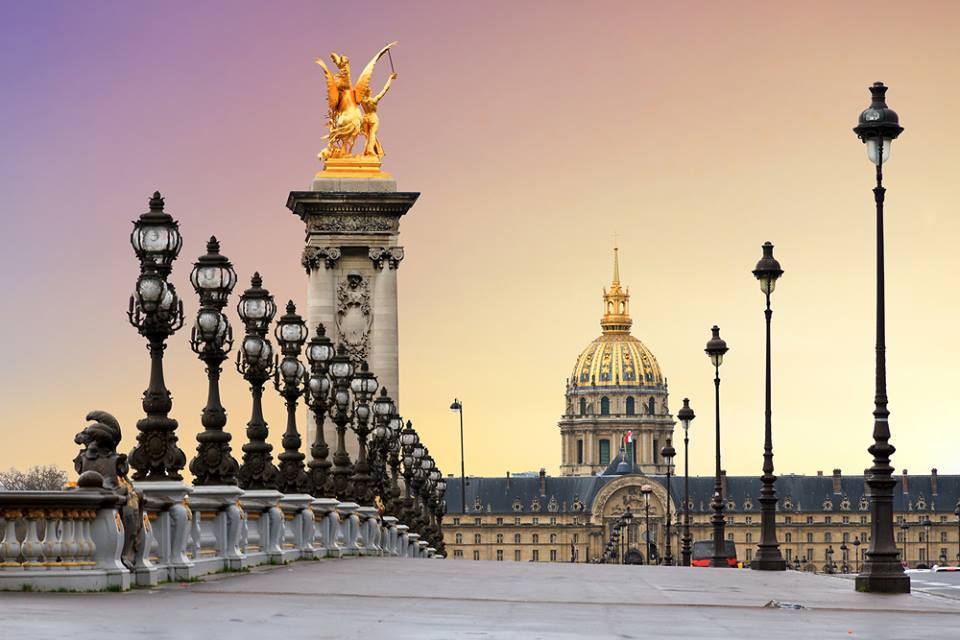
Located in Paris 7th arrondissement, Les Invalides is a complex of buildings originally built as a military hospital and rest home for France’s soldiers, and continues in that capacity today.
But the complex is also replete with buildings and monuments honoring French military history and includes the Musee de l’Armee, the Musee des Plans-Reliefs, and the Musee d’Histoire Contemporaine, as well as offering a burial site for many of the country’s war heroes and notable figures.
One of 15 courtyards included in the complex, the cour d’ honneur (court of honor), is known for its military parades.
The original project was initiated by Louis XIV as a home for retired and injured soldiers and was overseen by architect Liberal Bruant.
Louis XIV also commissioned the design and construction of a private royal chapel at the site, regarded today as one of the finest examples of French baroque architecture.
The dome of the chapel was modeled after the domed ceiling of St. Peter’s Basilica in Rome.
The complex is the location of the tombs of many French notables, perhaps the most famous being the tomb of Napoleon Bonaparte.
Originally interred on St. Helena, King Louis-Phillipe had the emperor’s body brought back to France, and it was finally laid to rest in 1870 in a sarcophagus directly under the dome at Les Invalides.
Notre Dame de Paris
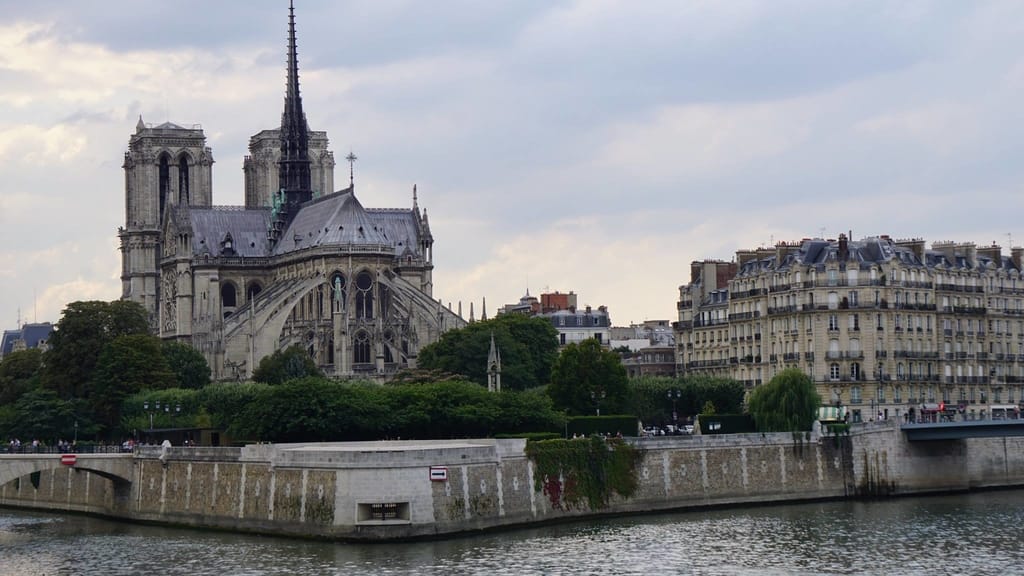
Widely considered among the best examples of French Gothic architecture, Notre Dame de Paris has been the site of much religious and political turmoil since its construction began in 1160 during the reign on Louis VII.
Notre Dame is one of the first buildings to have used flying buttresses; arched exterior supports, ultimately allowing for larger, higher ceilings.
During the French Revolution, much of the architectural and sculptural splendor of Notre Dame was destroyed or vandalized, and the structure itself began to fall into a state of neglected disrepair.
After author Victor Hugo penned his famous novel, “The Hunchback of Notre Dame”, in an effort to draw attention to the plight of the cathedral, interest in its restoration grew, culminating in a vast project that would eventually succeed in reconstructing and restoring the cathedral to its former glory.
The painstaking restoration effort continues to this day.
When visiting Notre Dame, tourists should be sure to look upward at the roof of the building, where they will see the statues of 13 men.
Twelve of the men represent the 12 apostles of Christ and face outward, while the 13th faces inward, and represents the architect himself.
>>Must-See Cathedrals In France
Opera Garnier
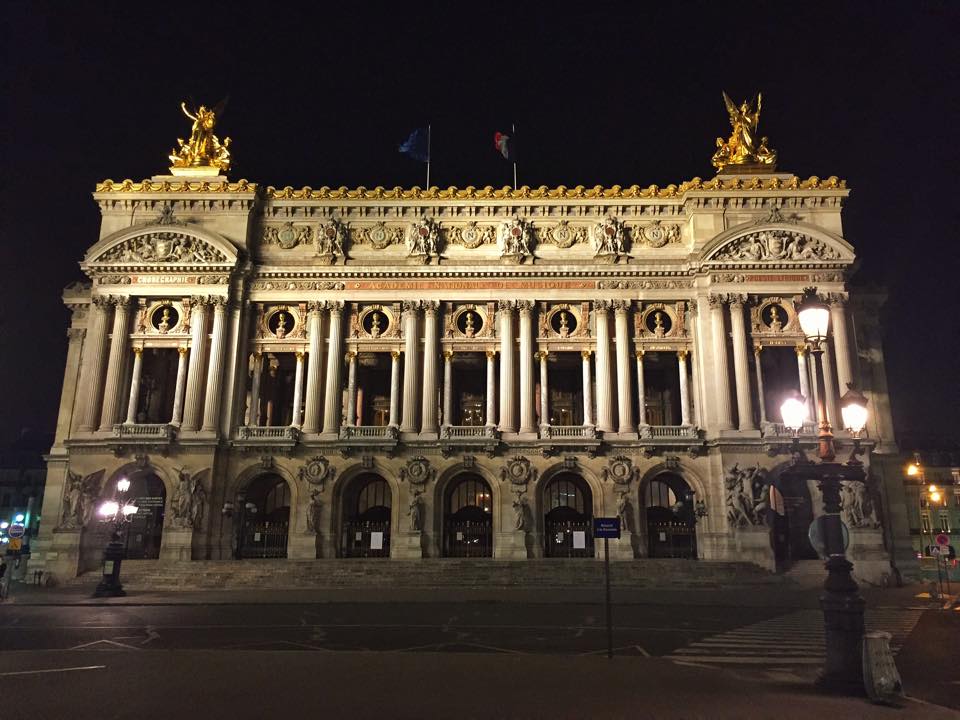
The Opera Garnier, also known as the Palais Garnier, was commissioned by Napoleon III during the Parisian reconstruction of the Second Empire, under the direction of architect Charles Garnier. Construction began in 1862, following the laying of the foundation stone in the previous year.
But numerous setbacks befell the construction, including the onset of the Franco-Prussian War and subsequent fall of the Second Empire, as well as the discovery of an underground lake. This lake, incidentally, would playa pivotal role in a literary work based on the Opera Garnier, Gaston Leroux’s 1910 work “The Phantom of the Opera.”
In 1873, the construction effort was spurred on by a fire, which destroyed the city’s primary opera and ballet venue, the Paris Opera. Today, tourists visit the Opera Garnier as much for its architectural details as for its performances. Elaborately decorated with multicolored marble friezes and statuary, the front facade boasts bronze busts of great composers, including Mozart, Rossini, Beethoven, and Phillipe Quinault.
Works by Aime Millet, Charles Gumery, Francois Jouffroy, and Jean-Baptiste Carpeaux are here, and visitors can also see the famed and sometimes criticized ceiling painting completed in 1964 by artist Marc Chagall. Many critics felt the painting, which was applied directly over the original mural, was inconsistent with the design of the rest of the building.
Sacre-Coeur
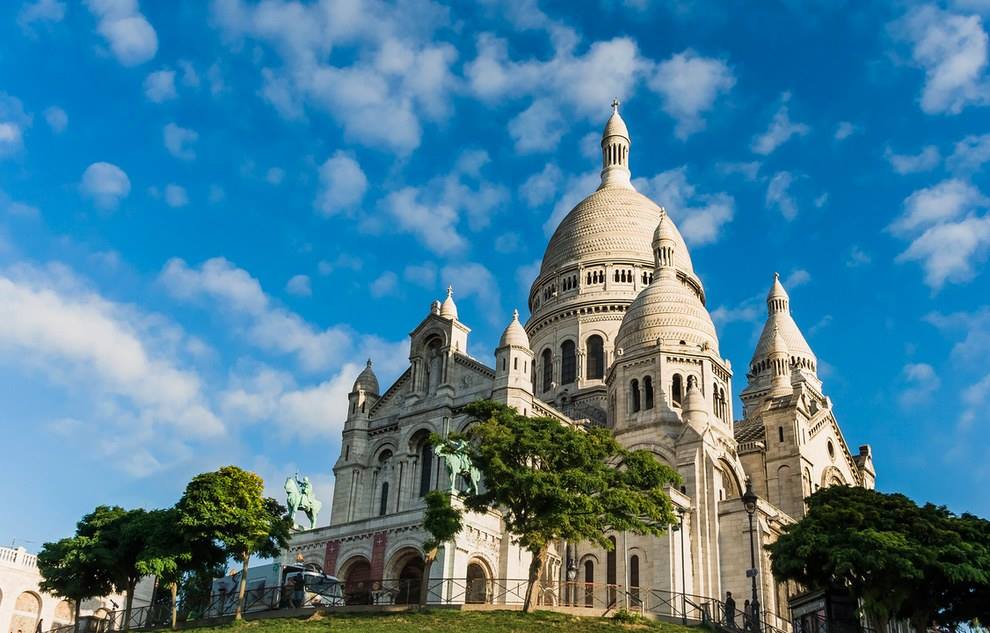
The Sacre-Coeur basilica, or the Basilica of the Sacred Heart, is located prominently at the summit of the butte of Montmartre, geographically the highest spot in Paris. The construction of the chapel was initially commissioned in 1873, as a tribute to the 58,000 people who lost their lives during the Franco-Prussian War.
The archbishop of Paris also hoped the construction of the Sacre-Coeur Basilica would make amends for the crimes of the participants in the Communard movement of the time. The building itself is made of French travertine stone, a limestone material that is responsible for the white appearance of the facade.
The basilica’s Romano-Byzantine architectural style incorporates nationalistic themes, including the portico, with two large bronze statues of the French saints Joan of Arc and King Saint Louis IX, both by sculptor Hippolyte Lefebvre. The basilica’s 19-ton bell is one of the largest in the world and commemorates the annexation of Savoy in 1860.
The grounds surrounding the Sacre-Coeur basilica include a meditation garden and fountain, and the top of the dome offers a spectacular view of the city of Paris, which is located predominantly to the south of the basilica itself.
Versailles
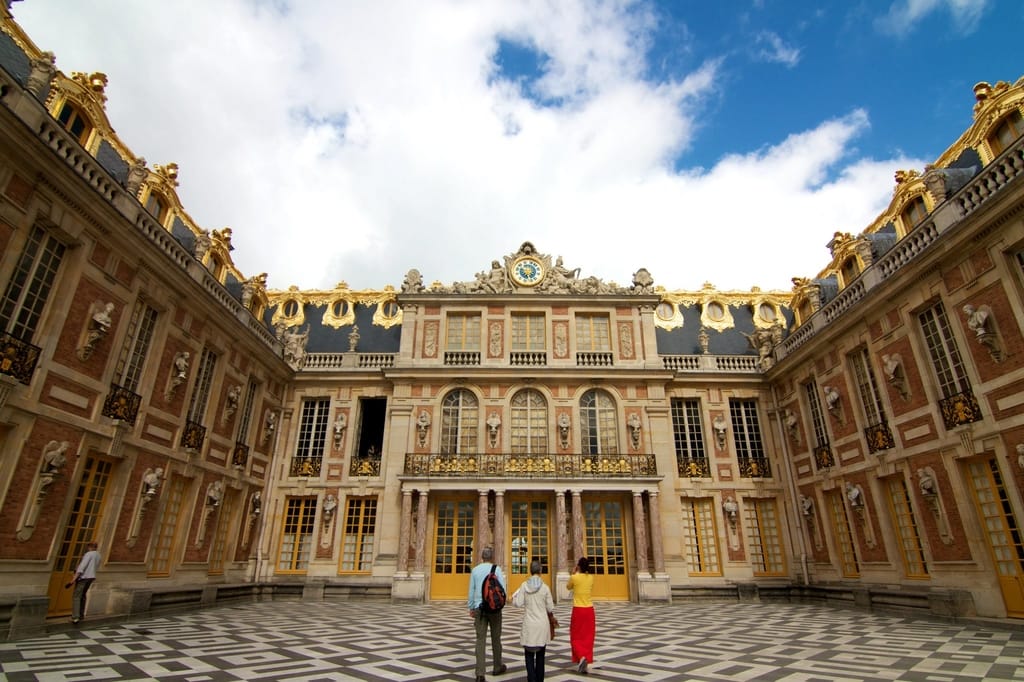
Just 13 miles southwest of Paris is Versailles, the unofficial former capital of France. Historically known as King Louis XIV’s huge royal palace and astounding gardens, Versailles is now the wealthiest suburb of Paris. The Palace of Versailles welcomes three million tourists each year, and many more come just to see the beautiful gardens surrounding the palace.
Ticket options for entry to the Palace vary, but many visitors choose the one-day pass, which allows access to the Hall of Mirrors and King’s State Apartments, the Queen’s State Apartments, the Dauphin’s (Heir) Apartments, the Marie Antoinette Estate, and the Grande Eaux Musicals (Fountain show).
Many artistic treasures are on display in the Palace, including Veronese’s painting of Christ at Supper with Simon, Marie Antoinette’s collection of Chinese vases, and a Claude Simeon Astronomical Clock. Guided audio tours are available in several languages.
During the summertime, there are a number of complementary activities offered around the Palace, including a miniature train ride and rental boats. On weekends, a musical fountain show occurs several times daily, and in the evenings, Les Fêtes de Nuit de Versailles, a show of fireworks, costumed performers, and illuminated fountains, is presented.
The grounds at the Palace have adequate walking paths but are so vast that many visitors rent bicycles or battery-powered golf carts to get around. Visitors may also enjoy renting their bicycles in Paris and taking a pleasant bike ride to reach Versailles.
What other important monuments do you like in Paris? Leave your comments below.
